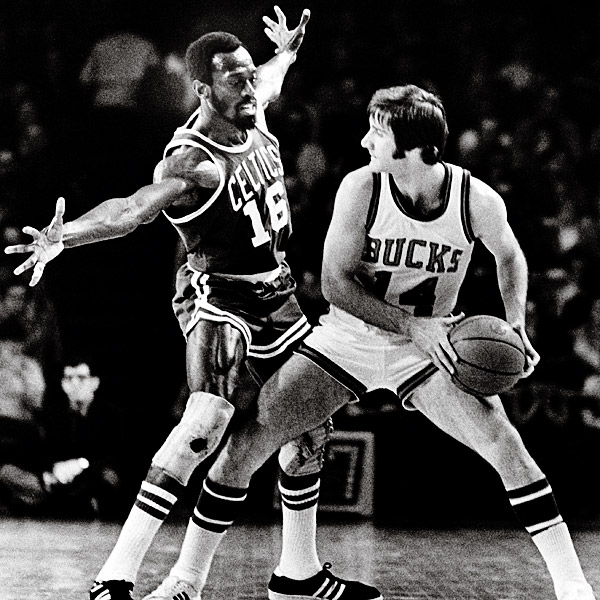Part 7The basketball player turned coach - he coached both the Celtics and Harvard's varsity - turned restaurateur. Sanders says that he enjoys the restaurant business, but that his first love is still playing basketball. "Would I rather be playing ball for a living? Oh, sure, no doubt about it," he says. "But any grown man or woman who enjoyed something as a kid, really liked it, really loved it, would probably still like to be able to do the same thing. Times change, though, commitments change, and obviously age has a little to do with those things, too.
"Most of the other parts of basketball, like coaching, are not as much fun. Not that life has to be a bowl of cherries, but to get as much fun as you can possibly get out of life is important because there are enough concerns as it is." This is Sanders the philosopher, the man whose teammates always thought of him as the team intellectual, the one who read books while the rest of them were giving interviews. The soft-spoken, polite ball player who made his name on the defense, that part of any sport that keeps you from the limelight while the high scorers get their names in the newspaper.
But the memories live on for Sanders. The walls of his restaurant are decorated with photographs, newspaper clippings, and cartoons of his glory days with the Celts. His old teammates drop by occasionally for dinner. Waiters and waitresses wear green and white frocks with the number 16 on the back, the number that the team retired when Sanders retired.
He has not abandoned basketball entirely: He still plays in old-timers' games and still runs a successful basketball camp in New Hampshire with teammate Don Nelson, an enterprise that, in the summer, takes almost as much time as the restaurant.
Last summer, weary from the almost daily commute between the camp and the restaurant, he arrived at Stanhope Street anxious to find things running well enough to let him grab some sleep before the two a.m. closing, his normal departure time. Once inside, though, he knew that all was not well. If it was ninety degrees out on the street, it was even warmer inside what was supposed to be an air-conditioned restaurant. The air conditioner was on the blink, the Phoenix was on the phone looking for next week's advertising copy - which he proceeded to sketch on a pad during an interview with a reporter - and someone from a civic organization kept calling, hoping to get some underprivileged kids into the already oversubscribed basketball camp. The last piece of business is the kind he is always faced with, given a long-standing reputation for involvement in the community.
By midnight, when the air conditioner repairman arrived, Sanders wanted nothing more than a few hours' sleep at his apartment in the Prudential complex. Instead, the repairs took most of the night, and Sanders, concerned about theft if he left the place unlocked, tried to convince the repairman to be locked inside the restaurant for a few hours, promising to return and let him out a few hours later. The man would have none of it, and Sanders finally agreed to spend the night at the restaurant while the work was done.-
In the early 1970s, after a knee operation threatened to end his basketball career, he would stay well into the night at Boston Garden, running up and down the steep stairs to the balcony in an effort to strengthen the leg and get his wind back.
He runs the restaurant with the same determination. There is no lingering over the bar with old friends. Late at night, over dinner, he might have a glass of ale with someone willing to sit and talk, but rarely anything stronger. If a waitress is having trouble tending to her tables, Sanders will step into the fray, taking and delivering orders himself. When things start disappearing from the kitchen, he stalks the culprit, an employee, late into the night, finally discovering that the missing articles are being stored inside a dumpster outside the kitchen door until the man leaves for the night.

